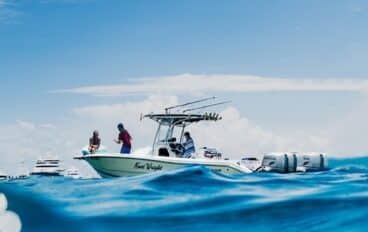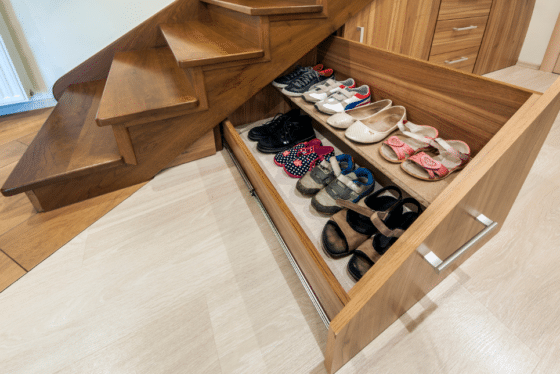
Hiding order behind a cloak of disorder is simply a question of subdivision.
Sun Tzu, The Art of War
Though Sun Tzu was a general, not a boat owner, he clearly grasped the fundamental principle of boat storage and organization – subdivision. Space on a boat is limited, though most boats have lockers and cabinets and space under settees and floors. If you can’t keep it from turning into a big junk drawer, you can’t fit as much in them. And if you pack them full, you’ll never find anything when you need it.
Sometimes your best storage ideas are free or inexpensive, just a little better way to store things. And sometimes you need to rethink what you have on board, or what you put it in, and a different product or organizer may be just the ticket.
Also Read: Pontoon Boat Covers: Which is Best for You?
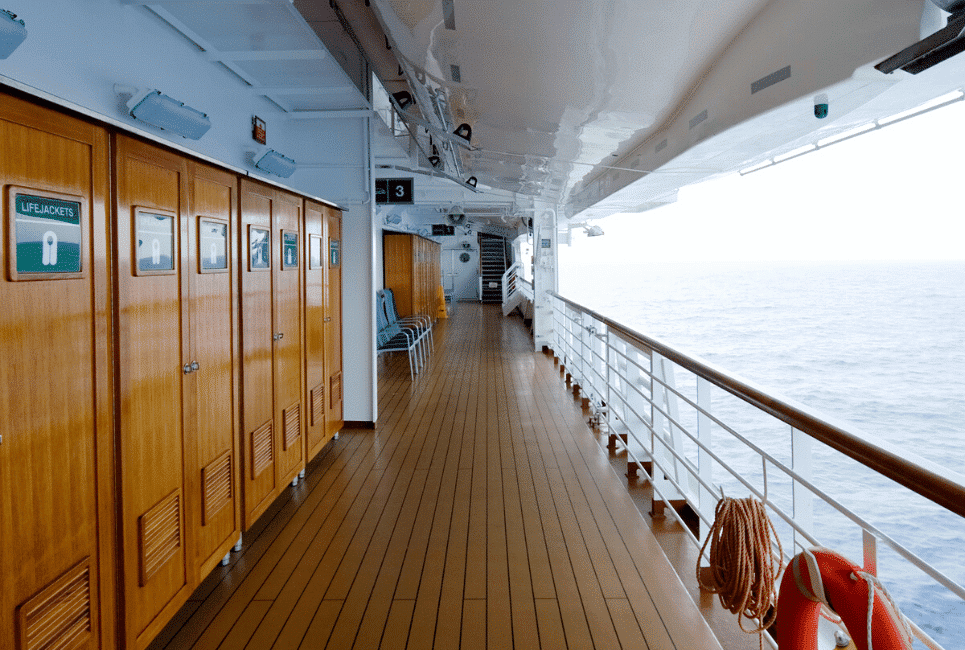
Storing in Layers
Trying to fit a lot of stuff in a small space, it’s important to know how often you use the items you stow. Daily use items should be on the top, and things you rarely use should be a bit buried. You’ll drive yourself nuts if you plan poorly and have to re-pack a locker every time you need something you use often.
So as you are storing, categorize things in terms of daily, weekly, occasional, and rare use, then plan and store accordingly.
Galley Storage and Organization
Of all the places to store things, the galley gets the most used and the most turnover and the most access. We eat every day and cook most of them. But even getting a bowl of cereal can be a chore with poor storage.
Containers and Tubs
Keeping food fresh is a challenge, and your best tool for organizing and combating humidity is airtight plastic canisters, tubs, and containers. Even though they take up space themselves, shifting stores like flour, sugar, breakfast cereal, pasta, and rice from their original packaging into containers protects them and makes their storage predictable and neat.
Avoid round canisters, because they waste space in the corners. Instead, look at the square and rectangular containers with an airtight seal. Positive pressure lids are even better (1), but they are more expensive.
Folding, Stacking, and Nesting in the Galley
With limited space, compact kitchen tools are your first strategy for getting as much in the galley as you can. True nesting pans (2) will fit an entire kitchen’s worth of pans into the biggest pot, with all the lids inside. Some stacking pans with fixed handles won’t get as compact.
Silicon cookware is also a boon to the galley. Whether it’s soft-sided baking pans or collapsible colanders and salad spinners, think about every item in your galley and whether there may be a good collapsible version (3) to save space.
Taming the Spices

Spice organization is one of the toughest nuts to crack on a boat. Spices around the world come in a variety of packaging, from glass and plastic tubes, metal canisters and boxes to plastic bags stapled to cardboard that you can’t reseal. A plan to keep them fresh and findable is a must.
Racks are a good idea, but be sure you scan and secure them for sailing. Many kitchen-style racks don’t consider being tipped, tilted, and bounced and you will lose spices if you hit rough conditions. And most of them have glass bottles, so those need to be very secure.
A few suggestions for spice storage include:
- Get identical spice jars or small square canisters that fit packed in a drawer. Label them on the sides and on the top.
- If you can dedicate a whole galley drawer, an in-drawer spice organizer is a great option.
- Clearly labeled zip-lock bags will keep spices fresh and out of the way, and you can store them anywhere, even in a recipe organizer or airtight box (4).
- Adapt a household spice rack by adding retention straps, rubber bands, strings, or brackets to hold bottles in. If you can, screw the rack to the boat or secure it in a locker underway.
- Install a rack like the SeaTeak spice rack or the Whitecap two-tier spice rack. These have a bar across the front to secure bottles in a seaway.
Netting for Storing and Securing
You can hang nylon netting in many places to store extra gear or food. Arrange hooks in out-of-the-way spaces to make hammocks for bread, fruit, or other lightweight supplies to hang. Add netting pockets in strategic places for easy access to tools and goods.
The other handy use for netting is securing lockers, especially on sailboats. Nothing makes a bigger mess than a well-packed closet exploding open when the boat heels. Install hooks near the edges of lockers, then stretch the net over the opening to keep contents put.
Storage Bags
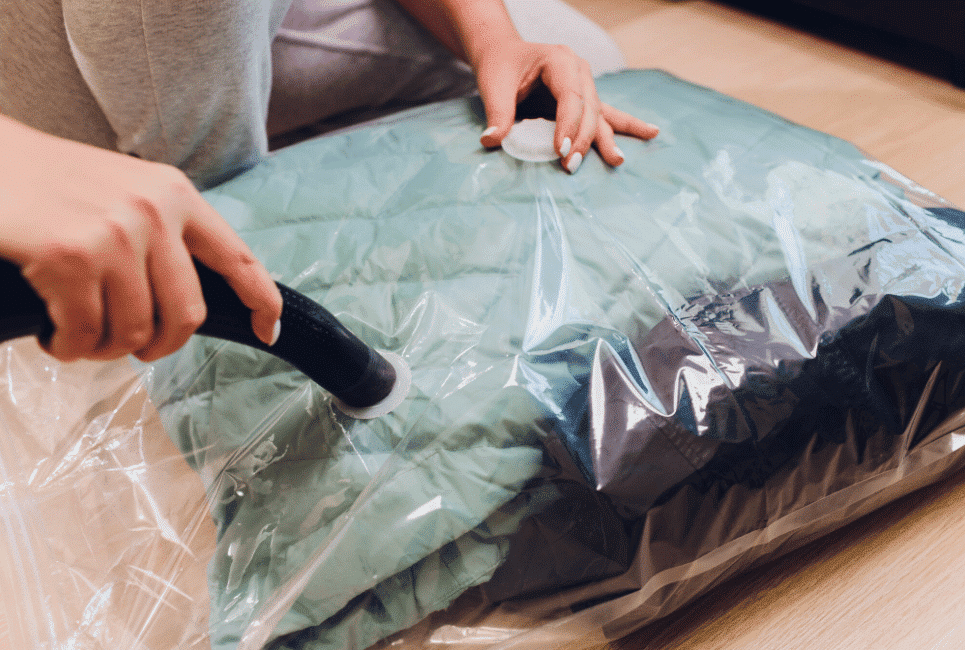
Sealable bags like Ziplocs are great for keeping related items together, but tight-packing vacuum storage bags (5) let you compress soft contents and double a locker’s capacity. Watch for sharp objects like zippers when you fill them, but there’s no better way to maximize your deep storage.
Roll-up dry storage bags are also great tools to protect gear and clothing and keep spaces segregated. We’re used to using them to carry gear in the dinghy, but you can also roll the air out of them for deep storage in out-of-the-way places.
Vacuum Sealers
A small vacuum sealer is a versatile tool on a boat. Not just for long storage in the fridge and freezer, vacuum sealing is a great way to pack and store dry goods deep in the boat. For flour and other powders, fill a brown paper lunch bag and tape it shut, then vacuum seals the entire bag and label it.
Beyond the galley, vacuum seals small spare parts, infrequently used tools, and other supplies to keep them together, save space, and protect them from humidity and moisture. Watch the sharp edges on some parts and tools; wrap those in cardboard or cloth to pad the corners and avoid puncturing the bag.
Shoe Organizers Aren’t Just for Shoes
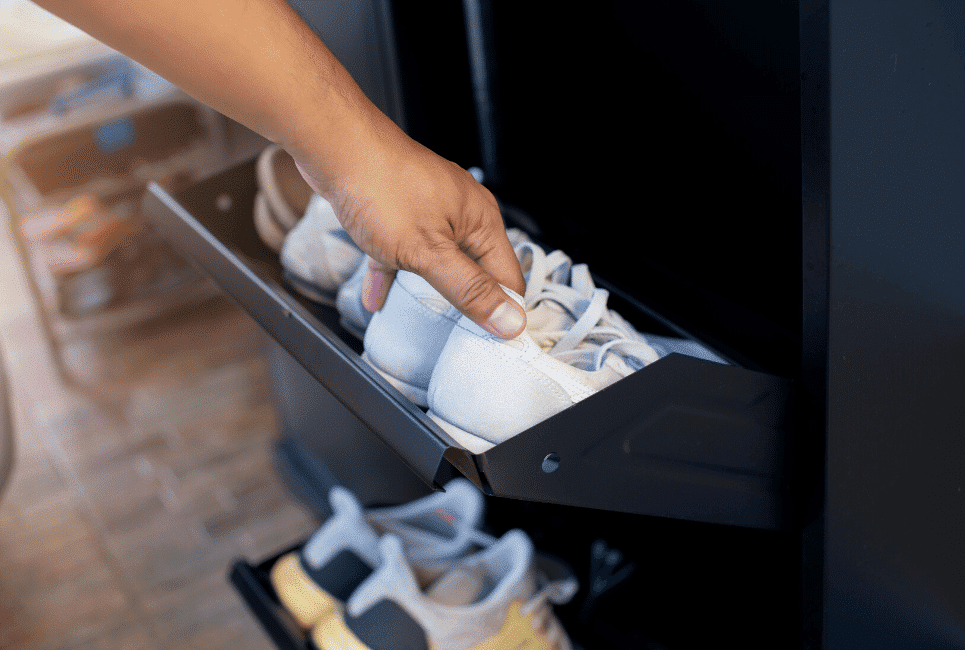
Back of door space gives you extra storage if you add a shoe organizer to the back. You can store anything that fits in the pockets there: t-shirts, socks, hats, or anything you want quick access to.
Be careful of over-the-top hangers, since boat doors often close tighter than home doors and may not work with the organizer hanging there. Remove the door hooks and mount the hanger directly to the door through the hook holes.
In a similar vein, hanging shoe shelves and closet organizers add compartmentalized storage and shelves to hanging lockers.
Tool Rolls and Bags
Storing tools on a boat is tough because they are heavy and may have sharp edges or cutting surfaces. Heavy toolboxes also have sharp corners, slide around, bang things, and rust.
Two of our favorite solutions are tool rolls and soft-sided tool bags. Tool rolls can come in a couple of styles – pocket style, with pockets to slide tools into, or pouch-style bags, with individual pouches to store groups of tools. There are a few combination-style bags with slots and pouches and other options like bags with removable pouches.
If you need more than one roll, group like tools together so you know where they are. Finally, look for materials that are water and mildew-resistant. Avoid leather and other natural materials which might be very tough, but vulnerable to a damp boat environment.
Check soft-sided toolboxes and bags for pockets, organizers, straps, and loops that work for your tools, and choose water and mildew-resistant materials. If you must have a hard tool case, a plastic tool case will last much longer in a marine environment.
Finally, some tool sets come with well-thought-out cases and bags. Storage on the boat can be a factor deciding between sets of wrenches or screwdrivers. Anything that comes with a soft, well-made organizer will take care of itself in your tool locker.
Storage Bins Keep it All Straight
Under the floorboards and inside cabinets, loose things can get out of hand. Going back to the quote we lead in with, well-chosen containers can tame those spaces and keep things organized without taking up too much extra space. Yes, you will lose a little, but it’s worth it for the right container scheme.
Group related items together and make sure you have room around the sides to put the lids on tight when the floorboards are closed.
You might also be interested in: The 10 Best Marine Toilets in 2022




